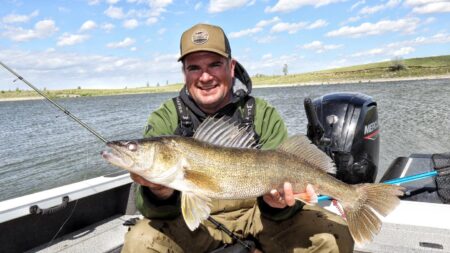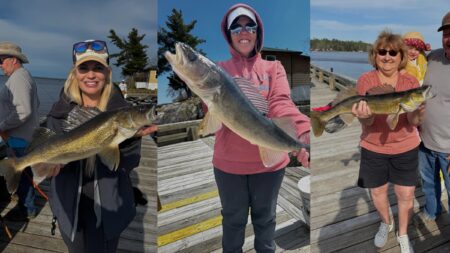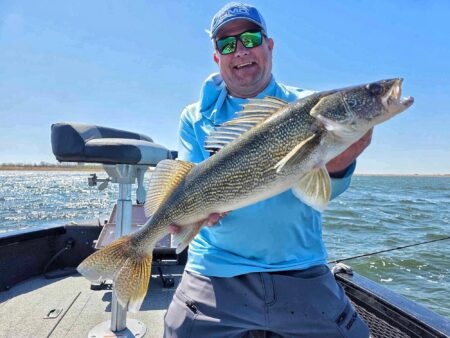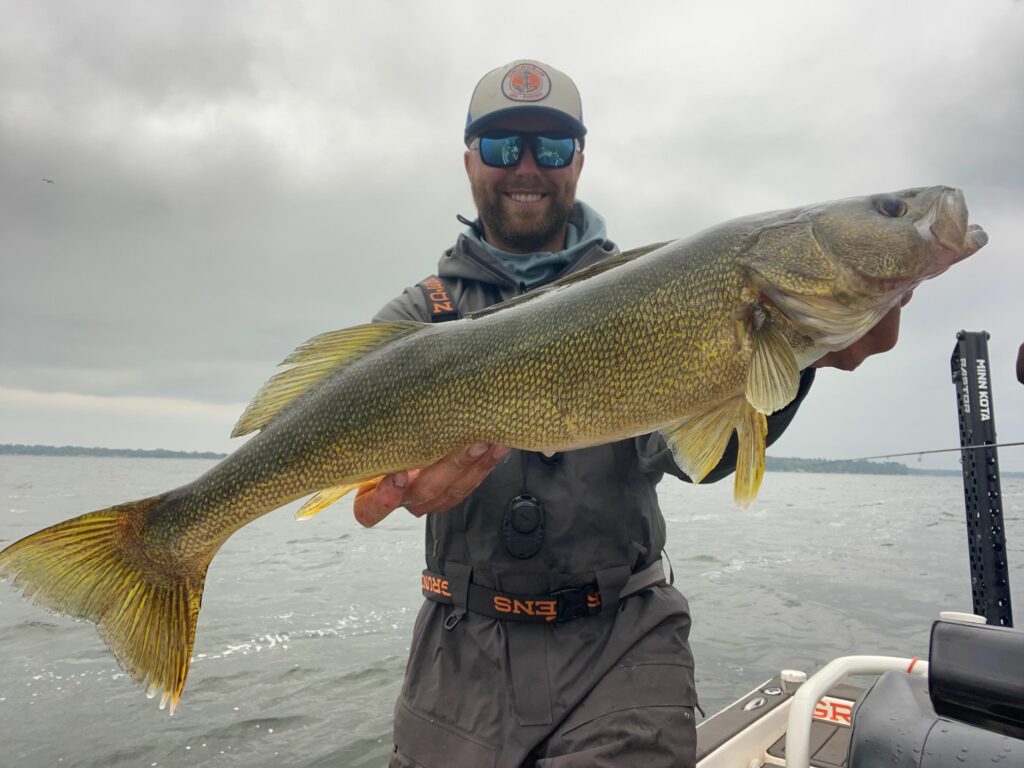
Luke Swanson is an accomplished multi-species guide in the Brainerd Lakes Area in northern Minnesota spending a lot of time specifically targeting smallmouth bass, walleye and musky. Luke spends a lot of time on Gull Lake each fall targeting walleye and offers some valuable advice for anglers hoping to target walleye this fall.
Be sure to check out more about break line fishing fall walleye in our archive of fall walleye tips here.
Fall walleyes on Gull Lake often relate to sharp break lines. Sharp breaks that plummet from ten to twenty-five feet of water often hold fish. Most of these productive locations have a sand bottom and some locations will have some scattered weed growth growing down the break. Fishing these steep contours is all about boat control. Swanson recommends holding the boat in twenty-five to thirty feet of water and cast up into the break with jigs and minnows. Casting shallow and working the jig down the break line towards the boat. Swanson relies on forward facing sonar to find pods of fish and casts at schools of fish with a quarter ounce jig and big minnow. Couple of observations… big minnows seem to work better and better as we progress into the fall. “I often buy just a river mix of minnows at the bait shop which will have rainbows, fatheads, suckers and some chubs. Early in the fall, I will catch a lot of fish on fatheads but as the fall progresses, you will definitely see a progression where the bigger minnows get preferred, but you don’t necessarily have to use just chubs or redtails as these minnows are much more expensive to buy. You can use a big rainbow or sucker and that will work well but just lean towards bigger minnows as we get into fall,” explains Swanson.
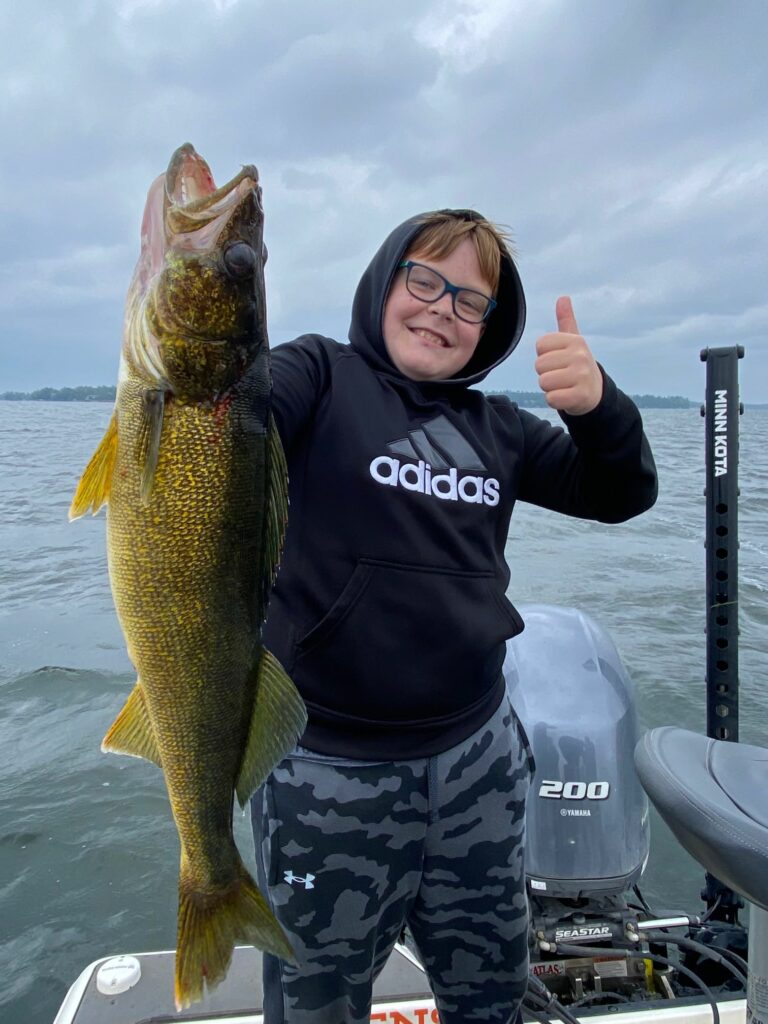
For these particular locations, Swanson is relying on a ¼ ounce short shank jig head in black or gold and often uses a stinger hook when using the larger minnows, piercing the stinger hook near the dorsal fin on the minnow.
Swanson uses forward facing sonar to find and set up on fish but forward-facing sonar on places like Gull Lake is becoming more nuanced. Swanson will pan the transducer and find fish but then immediately turn the transducer away from fish. Swanson and many other astute walleye anglers are beginning to realize that the frequency of forward-facing sonar is something that fish can feel and as fish get more pressure from anglers using this technology, anglers are having to make some adjustments. Swanson is now using the forward-facing sonar to find fish and know exactly where to cast but he is turning the transducer away from fish immediately after he finds fish.
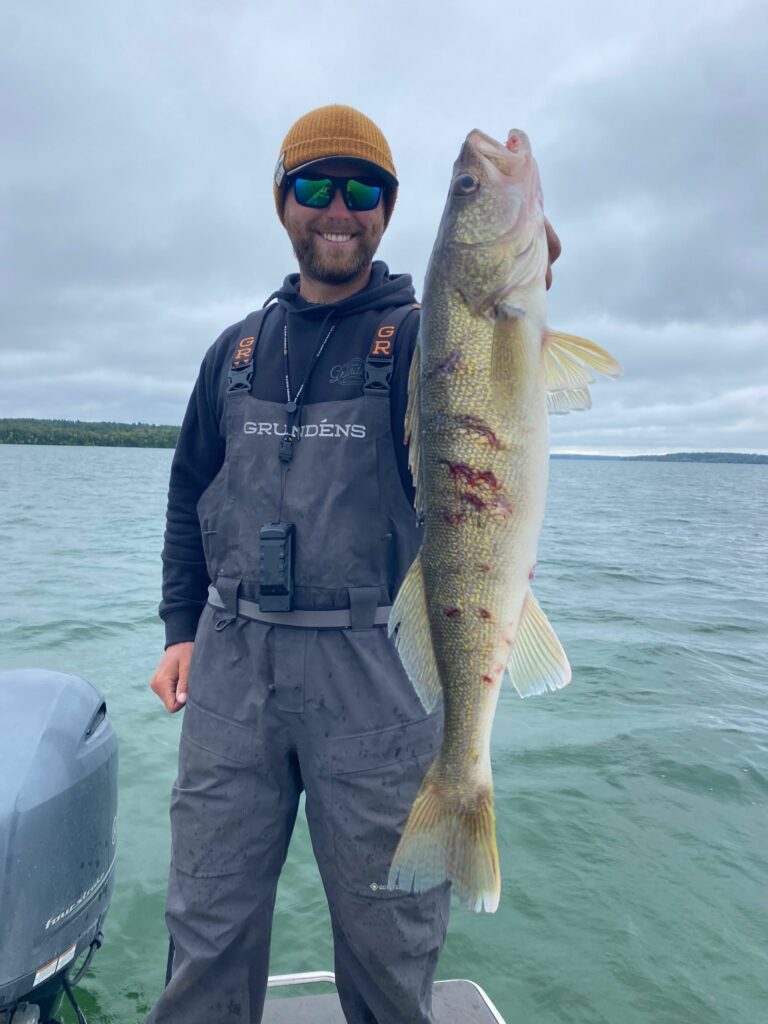
On Gull Lake in particular but this observation can be applied to many northern Minnesota lakes, always try to fish the wind. Sharp breaking contours with wind blowing into the spot are almost always better and many of these locations do seem to need wind to fire up. If you don’t have wind, fish locations that were recently hit by wind. In other words, fish yesterday’s wind if you don’t have wind the day you are fishing.

